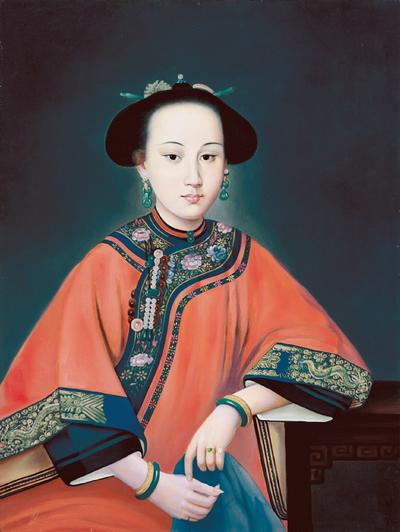
Fragrant Concubine
| Name | Fragrant Concubine |
| Title | Chinese imperial consort |
| Gender | Female |
| Birthday | 1734-01-01 |
| nationality | Qing dynasty |
| Source | https://www.wikidata.org/wiki/Q985615 |
| pptrace | View Family Tree |
| LastUpdate | 2025-10-27T03:40:46.911Z |
Introduction
The Fragrant Concubine, known in Chinese as 香妃 (Xiāng Fēi), is a figure rooted in Chinese legend associated with the Qing Dynasty during the 18th century. Her story, though widely regarded as mythological, may have been inspired by an actual person who entered the imperial harem in 1760 and was given the title "Imperial Consort Rong" (容妃; Róng Fēi).
Historical records indicate that the legend’s Qing narrative begins with the discovery by the Qianlong Emperor of a Kashgarian Muslim woman named Iparhan ("Musky Woman"). She was described as the granddaughter of Afaq Khoja, a local chieftain from Kashgar, an oasis city in western China. According to the legend, Iparhan possessed a distinctive natural fragrance. She was presented as a gift to the emperor and was transported from Kashgar to Beijing, with her every day’s bath involving camel’s milk to maintain her scent.
Upon arriving in Beijing, the emperor allotted her a garden and a luxurious room. The story states that she was initially homesick and distressed; the emperor attempted to recreate her homeland by constructing a mosque, a miniature oasis, and a bazaar outside her window in an effort to make her comfortable. Over time, she is said to have developed affection for him, especially after receiving a gift of a jujube tree bearing golden fruit from Kashgar. She became a favored consort and was described as dying in service to the emperor, with her body being returned to Kashgar. The transport of her body involved a journey of over three years carried out by 120 bearers.
Conversely, Kashgarian legends provide a different perspective. They identify her as Nur Ela Nurhan, daughter or consort of Khwāja Jihān, and portray her as suspicious of the emperor’s intentions, ultimately leading her to poison herself to avoid his advances. Historically, Khwāja Jihān and his brother Burhān ud-Dīn were Khoja leaders during the Qing conquest of Xinjiang. During the late 17th century, the Dzungar Khanate controlled the Yarkent Khanate region, and the Khojas, including Jihān’s family, supported Qing efforts to conquer their rulers in northern Xinjiang. By the 1750s, the Qing Dynasty subdued these Khoja rulers, leading to the integration of southern Xinjiang (Altishahr) into Qing territory.
The Afaq Khoja Mausoleum located outside Kashgar, built in 1640, is a significant site linked to her legend. It contains the coffins of several generations of the Afaq Khoja lineage, including what is purported to be the body of the Fragrant Concubine. However, historical records specify that the real Imperial Consort Rong died of illness on 24 May 1788 and was interred at the Eastern Qing Tombs. The association of her legend with the Kashgar mausoleum emerged in the late 19th century, becoming an official and touristic site.
The legend has been depicted extensively in fiction, including Nellie Yu Roung Ling’s 1930 novella "Hsiang Fei: A Love Story of the Emperor Ch’ien Lung." The character has also appeared in Louis Cha's wuxia novel "The Book and the Sword" as Princess Fragrance, and in television adaptations such as "My Fair Princess" (1998, 2011), "Story of Yanxi Palace" (2018), and "Ruyi's Royal Love in the Palace" (2018). Additionally, her story inspired a dance work titled "Princess Xiang Fei," composed by Taiwanese musician Koh Bunya.
References to her legend and historical context are documented in scholarly works including Graham E. Fuller and Jonathan N. Lipman's "Xinjiang: China's Muslim Borderland," James A. Millward's article "A Uyghur Muslim in Qianlong's Court: The Meaning of the Fragrant Concubine," and Christian Tyler’s "Wild West China: The Taming of Xinjiang."
Family Tree
Tap to expand more relatives